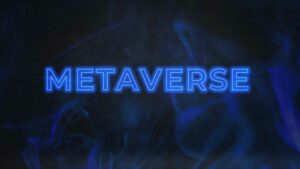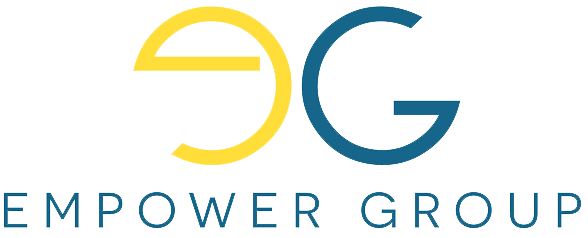Content
There are some third party open-source reporting tools available for PostgreSQL, such as Reportizer or dbForge Studio. These are the deep-end security enhancement features of the DBMS. Different databases have different types and levels of data encryption methods, which provide protection against data theft. PostgreSQL’s server-level advanced authentication methods include LDAP and PAM , which provide protection from attacks. These security mechanisms potentially reduce the attack surface of the PostgreSQL database servers. Other server-level security enhancements to PostgreSQL include PostgreSQL server listen address, host-based authentication, and certificate authentication.
Also, it has a web-based user interface to ease onboarding. PostgreSQL provides data encryption and allows you to use SSL certificates when your data is travelling through the web or public network highways. It also allows you to implement Client Certificate Authentication tools as an option. In addition, you can use cryptogenic functions to store encrypted data in PostgreSQL.
Advantages and Disadvantages
Operational costs are similar to that of any other standard DBMS in the market. PostgreSQL has built-in logical backup utilities, such as pg_dump and pg_dumpall. High availability has always been a priority requirement for a database.
In PostgreSQL, you can implement this using role-based access control, which includes user-level privileges as role assignments, table-level privileges via roles, and role inheritance. High PerformanceMySQL is designed to cater to the high demand and availability of applications with better speed and memory caching processes. It also has a storage engine framework that is used to provide users with administrative features in their databases. Another important feature of Postgres is that it is highly extensible.
MySQL is known as a fast and reliable solution that represents databases as a collection of relations. This model is interpreted as tables with rows and columns. The client sends the request to the MySQL server, and the server is responsible for sending the required output.
- Postgres itself has features that are related to security but also extensions that you can make use of to enhance security.
- MySQL. Is the most popular database management system on the market.
- It provides parameter security, as well as app security.
- It does this by exposing an interface by which anybody can write a language and that will then run inside the database.
- It also supports standard programs such as MySQL, ANSI SQL, MongoDB, Oracle, and many others.
- In PostgreSQL, you can implement this using role-based access control, which includes user-level privileges as role assignments, table-level privileges via roles, and role inheritance.
With a clear schema of which data can go into a table and that schema is defined by fields. It can be used by a programmer, project manager, and system administrator or by any software professional for the purpose of building products, websites, tools, etc. It requires minimum maintenance because of its stability.
Slower performance:
Since the first version of MS SQL Server, it has included a very intelligent and interactive built-in database management application as well as rich GUI-based reporting tools. From installation up to any extent, the MS SQL Server database is well-equipped in terms of GUI interfaces. The downloaded installer can be started by double-clicking. First of all, it installs the Microsoft compiler Visual C++, as long as it isn’t already installed on the system. Select the PostgreSQL location, then you have the option of excluding individual components of the installation package from being installed.

Furthermore, PostgreSQL has an Open Source Initiative Approved License. PostgreSQL is one of the widely used object relational database management systems. It is an open source database management system that offers more advanced and important features. PostgreSQL is written in C language and supports almost all operating systems. It is also known as an Enterprise class relational database system.
How to install PostgreSQL
It will have an improved architecture, remove existing limitations for backups and restores, enable automated scaling for storage and resources, and more. This quarter we plan to release a beta version, keep an eye on our releases. Today’s enterprise environment is multi-database by default. Percona can help companies run PostgreSQL, MySQL, and MongoDB databases workloads over Kubernetes in a comprehensive manner. Extension management system, where users can choose the extension and its version to expand PG cluster capabilities.

Each group consists of multiple users and user can do activities like upload,share,comment etc. within their group only. Under “Supported Platforms,” users can check whether the desired Postgres version is supported on the target platform. The useful support of JSON also makes PostgreSQL an excellent database solution for scaling NoSQL workloads. Even with a relatively small number of modules, and a small pool size in each, you end up with a lot of server processes. On modern Linux systems, the difference in overhead between forking a process and creating a thread is much lesser than it used to be. Each client having its own process prevents a poorly behaving client from crashing the entire database.
Managing databases, handling transactions, and auditing are not efficient enough. Hence it is not recommended for large databases with frequent updates. Tables that are being used or subjected to triggers are pre locked, making the concurrent read/ write features either slow or impossible. Flexibility in using IoT ad Embossed systems as it has Embedded multi threaded libraries.
It helps for continuous performance without stalling databases. PostgreSQL Server has an MVC architectural design that supports a large number of concurrent users to work with multi databases. It also offers load balancing and replication flexibility. PostgreSQL ensures availability and eliminates system stalling by always keeping a server available in case any primary server fails. It also utilizes disk failover and data partitioning for this purpose.
PostgreSQL vs MySQL : Installation and Extensibility
PostgreSQL is an object-relational database management system used for advanced tasks. It supports multiple databases and query languages like Structured Query Language and procedural languages like PL/pgSQL (Procedural Language/PostgreSQL). It has table structures and other data types as it is an RDBMS. PostgreSQL has an authentication option with Lightweight Directory Access Protocol and a Pluggable Authentication Module . They protect PostgreSQL database servers from thefts and attacks. There is another server-level security option that includes server listening address, certificate authentication, and host-based authentication.

MySQL, on the other hand, has been tuned to close the gap in terms of massive data writes. In recent versions, the performance disparities between MySQL and Postgres have been mostly eliminated. MySQL can https://globalcloudteam.com/ still read data quickly, but only if the old MyISAM engine is used. PostgreSQL encrypts data in different levels and allows using SSL certificates when data is transferred via the web or public networks.
Depending on the type of your project or application, it is sometimes essential to find out how smart your chosen database’s reporting tools are. For example, GUI interfaces are not required for a data warehousing project, but database reporting tools are particularly useful for e-commerce applications and ERP systems. In addition to the reports available in the business application, a reporting tool and other GUI options help business strategists quickly check market changes and data trends. PostgreSQL has many tools and parameters for monitoring and optimizing the database performance.
current community
DBMS is a combination of applications, different utilities, and libraries. Over the years, there are no. of database management systems out there. The object-relational database specifies large, shared databases.
Therefore, for simple, read-heavy workflows, Postgres might be a worse choice than MySQL. While MySQL has experienced some license concerns, Postgres is completely open-source and community-driven. It began as a commercial product , and Oracle’s acquisition of MySQL AB in 2010 has raised some developer worries about its future open-source status. However, because there are multiple open-source forks of the original MySQL , this is not currently seen as a significant danger. Using the old engine is not an option since these functionalities are vital to business or consumer-scale applications.
C# developers
Using the default choice is seldom a bad idea, but it’s worth thinking about. Don’t get caught up in familiarity and comfort — a smart developer must constantly make educated selections based on the many possibilities, their pros, and downsides. Blog to learn about SQL, database, Oracle, SQL Server, MySQL, PostgreSQL concepts and much more. Highly dependable on third party addons, as there are some missing built in features.
Some of this database’s prominent features are that it is highly robust and reliable, the recovering process is effortless, and maintenance costs less cost and manual efforts. It is developed and maintained by the PostgreSQL Global Development Group, which is a group of PostgreSQL developers. With relational database systems, you use tables to store and manage information. This sounds simple but involves quite complex concepts such as normal forms, key relationships, and JOINs. On the downside, the licensing and support costs are discouraging for the e-commerce users. For example, there may be many user accounts in your PostgreSQL database server (i.e. application accounts, end user accounts, admin accounts, developer accounts, etc.).
PostgreSQL vs SQL Server are both the most popular and widely used databases in the field. It can be summarized that both have mixed pros and cons that can differ from application to application. However, MongoDB vs PostgreSQL the final decision is solely based on your application, project domain, and assets. Hence we think that you got a clear and sound knowledge about the differences between these “must try” databases.
Disadvantage of PostGRESQL
MySQL has a history of being a lightning-fast database for read-intensive workloads, often at the expense of concurrency when paired with write operations. Not recommended for large enterprise applications due to slow performance. There are many other solutions that make PostgreSQL highly available, such as disk failover and data partitioning. It also offers replication capabilities which allow to scale out as many database servers as you want. The above diagram creates separate services for every client, which turns into a lot of memory utilization.
